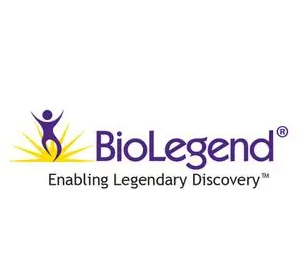PE/Cyanine7 anti-mouse CD25 Antibody
- 产品名称:
- PE/Cyanine7 anti-mouse CD25 Antibody
- 产品类别:
- 抗体
- 产品编号:
- 101915
- 产品应用:
- 101915
- Verified Reactivity
- Mouse
- Antibody Type
- Monoclonal
- Host Species
- Rat
- Immunogen
- IL-2-dependent BALB/c mouse helper T-cell clone HT-2
- Formulation
- Phosphate-buffered solution, pH 7.2, containing 0.09% sodium azide.
- Preparation
- The antibody was purified by affinity chromatography and conjugated with PE/Cyanine7 under optimal conditions.
- Concentration
- 0.2 mg/ml
- Storage & Handling
- The antibody solution should be stored undiluted between 2°C and 8°C, and protected from prolonged exposure to light. Do not freeze.
- Application
-
FC - Quality tested
- Recommended Usage
Each lot of this antibody is quality control tested by immunofluorescent staining with flow cytometric analysis. For flow cytometric staining, the suggested use of this reagent is ≤0.5 ?g per million cells in 100 ?l volume. It is recommended that the reagent be titrated for optimal performance for each application.
- Excitation Laser
- Blue Laser (488 nm)
Green Laser (532 nm)/Yellow-Green Laser (561 nm)
- Application Notes
Additional reported applications (for the relevant formats) include: in vitro blocking of IL-2 binding to low- and high-affinity receptors1,2, and immunohistochemical staining of acetone-fixed frozen sections. 3C7 antibody recognizes different epitope of PC61 antibody (Cat. No. 102002). The Ultra-LEAF?Purified antibody (Endotoxin < 0.01 EU/?g, Azide-Free, 0.2 ?m filtered) is recommended for functional assays (Cat. No. 101925 and 101926).
- Additional Product Notes
- BioLegend is in the process of converting the name PE/Cy7 to PE/Cyanine7. The dye molecule remains the same, so you should expect the same quality and performance from our PE/Cyanine7 products. Please contact Technical Service if you have any questions.
- Application References
(PubMed link indicates BioLegend citation) -
- Ortega RG, et al. 1984. J. Immunol. 133:1970. (Block)
- Moreau JL, et al. 1987. Eur. J. Immunol. 17:929. (Block)
- Product Citations
-
- Lin YN, et al. 2022. Oncoimmunology. 11:2027136. PubMed
- Hickey A, et al. 2021. Front Microbiol. 12:653587. PubMed
- Sun CC, et al. 2020. Genome Med. 0.553472222. PubMed
- Zirngibl F, et al. 2021. J Immunother Cancer. 9:. PubMed
- MacDonald A, et al. 2021. Front Immunol. 12:755995. PubMed
- Yang K, et al. 2022. J Clin Invest. 132:. PubMed
- Lou Y, et al. 2021. Int J Mol Sci. 22:. PubMed
- Gong N, et al. 2020. Nat Nanotechnol. 1.35625. PubMed
- Ouyang S, et al. 2019. J Immunol. 202:1441. PubMed
- Waight JD, et al. 2018. Cancer Cell. 33:1033. PubMed
- Kim SI, et al. 2020. Molecular Cancer Therapeutics. 20(1):173-182. PubMed
- Young JS, et al. 2018. Front Immunol. 9:1385. PubMed
- Wang Y, et al. 2022. Nat Cell Biol. 24:230. PubMed
- RRID
- AB_2616761 (BioLegend Cat. No. 101915) AB_2616762 (BioLegend Cat. No. 101916)
- Structure
- Forms high affinity IL-2R with IL-2Rβ (CD122) and IL-2Rγ (CD132), 55 kD
- Distribution
-
Activated T cells and B cells, thymocyte subset, pre-B cells, T regulatory cells
- Function
- IL-2 receptor, signal transduction
- Ligand/Receptor
- IL-2
- Cell Type
- B cells, T cells, Tregs
- Biology Area
- Immunology
- Molecular Family
- CD Molecules, Cytokine/Chemokine Receptors
- Antigen References
-
1. Taniguchi T, et al. 1993. Cell 73:5.
2. Waldmann TA. 1991. J. Biol. Chem. 266:2681.
3. Read S, et al. 2000. J. Exp. Med. 192:295.
4. Lowenthal JW, et al. 1985. J. Immunol. 135:3988.
- Gene ID
- 16184 View all products for this Gene ID
- UniProt
- View information about CD25 on UniProt.org
